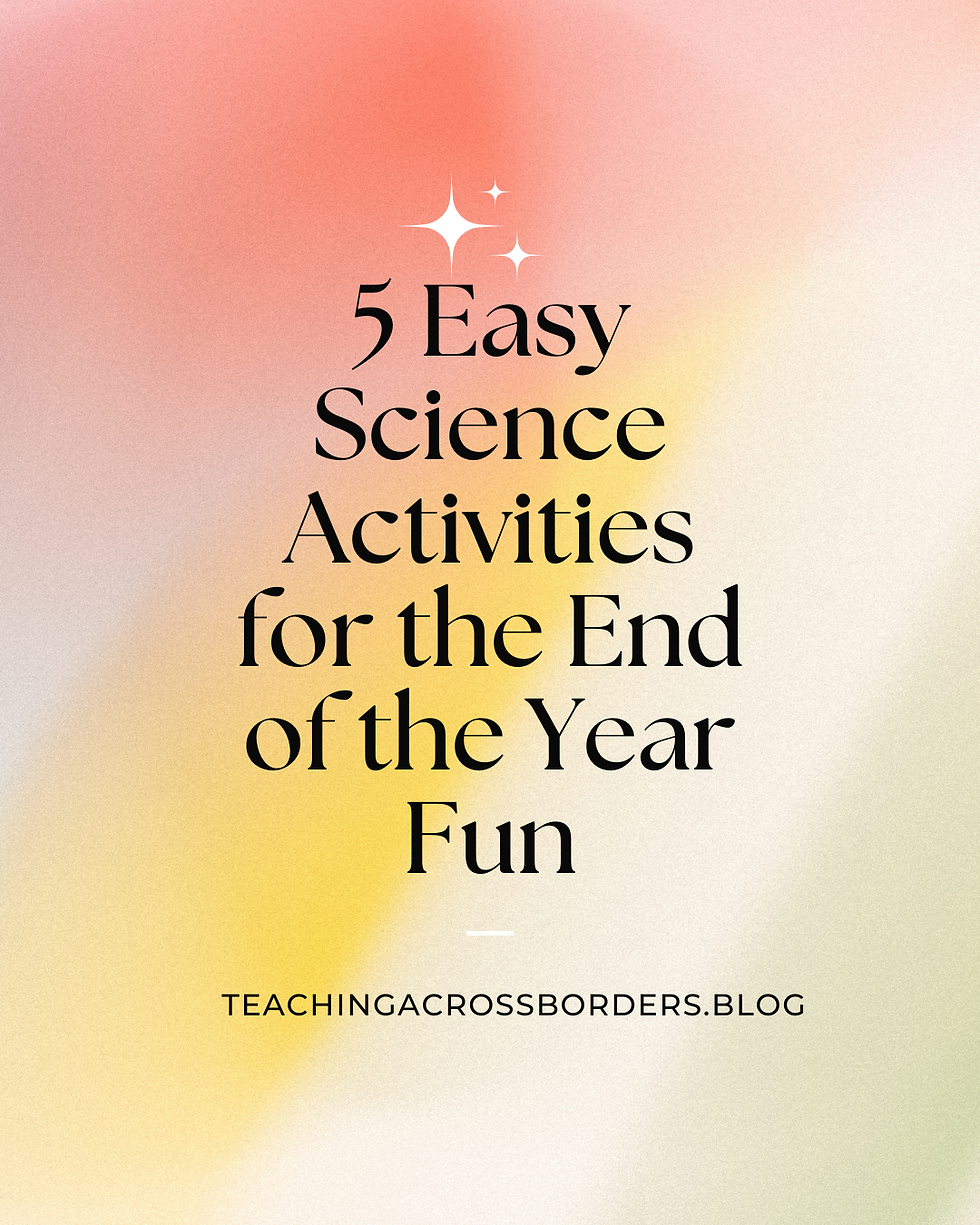Streamlining Classroom Management for a More Effective Learning Environment
- Laura Swallow

- Apr 6
- 3 min read
Hey there, fellow teacher!

Classroom management can feel like a never-ending challenge, especially when you’re juggling lesson plans, grading, and all the little details that make up a day in the classroom. I’ve been there, and I know that a smooth, well-organized classroom sets the stage for effective learning. Today, I’m excited to share some practical, low-prep tips for streamlining your classroom management—so you can focus more on teaching and less on constant disruptions.
Why Streamlined Classroom Management Matters
When your classroom runs like a well-oiled machine, it’s not just about maintaining order. A structured environment:
Boosts student engagement by providing clear expectations.
Enhances learning through consistent routines.
Reduces teacher stress by cutting down on time spent managing disruptions.
Supports differentiated instruction by giving students the space to work independently and collaboratively.
By implementing a few key strategies, you can create an environment that’s both organized and inviting, making every minute count.
Time-Saving Tips for Effective Classroom Management
1. Establish Clear Routines and Expectations
Clear routines are the backbone of any effective classroom. Take a few minutes at the start of the year—or even mid-year—to review your classroom expectations with your students. Visual aids, like simple posters or handouts, can be really helpful here.Tip: Use a Graphic Organizers Bundle from my store to create engaging visuals that outline daily procedures and expectations.

2. Plan Engaging Transitions
Transitions between activities are a common hotspot for chaos. Planning quick, engaging transition activities can help refocus students and reduce downtime.For example: A 30-second brain break or a fun prompt on a mini whiteboard can work wonders to reset your class.
3. Empower Students with Choice
Empowering students to take charge of their learning can significantly reduce classroom disruptions. Tools like Choice Boards offer students a menu of activity options, helping them feel more in control while keeping them on task. This autonomy not only fosters engagement but also minimizes off-task behavior.
4. Use Consistent, Low-Prep Resources
Low-prep resources are a lifesaver when it comes to maintaining a smooth classroom routine. When lessons flow seamlessly from one activity to the next, students are less likely to get distracted. Consider integrating affordable, ready-to-use resources that require little adjustment on your part—so you can spend more time interacting with your students.Check out: The Morphology Sets from my store, which can easily be adapted for various language lessons while keeping students engaged.
5. Leverage Digital Tools for Real-Time Feedback
Digital tools can help you monitor student behavior and understanding without interrupting the flow of your lesson. Apps like Kahoot, Quizizz, or Google Forms allow you to quickly assess where your students are, so you can adjust your management strategies on the fly. Digital exit tickets or quick polls can serve as both learning checks and behavior indicators.
6. Set Up a Behavior Management System
Consistency is key. Develop a simple behavior management system that rewards positive behavior and gently redirects off-task actions. Whether it’s a sticker chart, a points system, or verbal praise, having a system in place gives students clear guidelines on what’s expected. Keeping it low-prep is possible by integrating the system into your daily routines.
Bringing It All Together
Streamlining classroom management isn’t about creating a rigid, authoritarian environment—it’s about establishing clear, consistent routines that free up your time and create a supportive space for learning. By focusing on clear expectations, engaging transitions, student choice, and the right low-prep resources, you can transform your classroom into a place where both you and your students thrive.
If you’re interested in exploring more tools to support your classroom management strategies, feel free to visit my Teaching Across Borders store. Each resource is designed with busy teachers in mind—helping you create an environment that’s both organized and engaging without the extra prep work.
I’d love to hear your classroom management tips! What strategies have helped you keep your classroom running smoothly? Drop a comment below or share your thoughts on social media.
Happy teaching, and here’s to a more effective learning environment for everyone!
—Laura,Teaching Across Borders







Comments